The story of Major Henry D Williams MC
7 and 17 Squadrons RFC
By Peter Chapman 1995
Henry D. Williams joined the 11th Squadron, Auckland Mounted Rifles, at the outbreak of World War One. After initial training he was shipped with his squadron to Egypt, where they were placed in Zeitoun Camp and trained for the Gallipoli assault.
Gallipoli
Over the next year he fought at Gallipoli, gaining promotion to Lieutenant.
Royal Flying Corps
in early 1916 he applied for a transfer to the Royal Flying Corps as an observer. This was granted and in May 1916 he and a Lt Shand became the first officers in the New Zealand Expeditionary Force to transfer to the RFC, being posted to 17 Squadron.
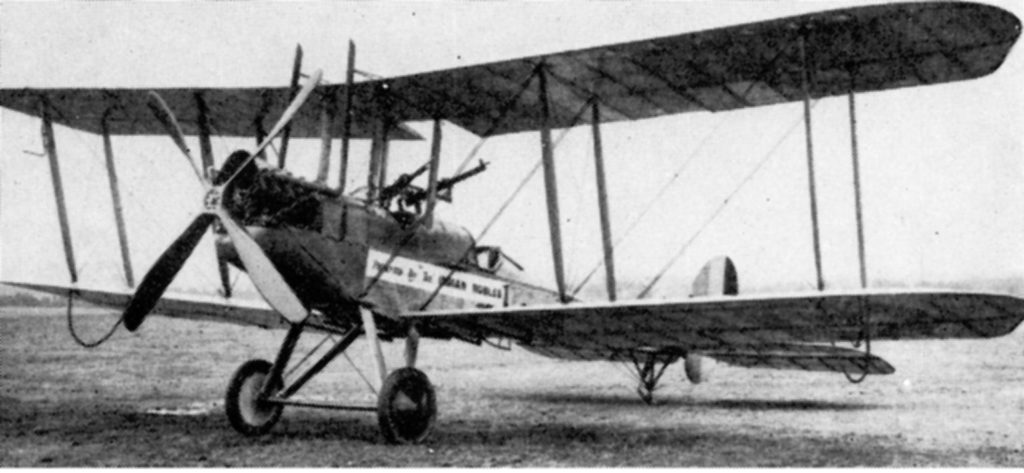
17 Squadron was equipped with BE2C aircraft and was part of the Fifth Wing RFC in Egypt. 14 Squadron and X Aircraft Park completed the Wing. These two squadrons had to cover a wide area and 17 Squadron was split into many small flight detachments at El Hammam, Port Sudan, Dets Fayoum, Minya, Assiyut, Rahad, Nahud and Jebel El Hillah.
Lt Williams was assigned to B Flight and posted to the detachment at Assiyut. This detachment was responsible for the reconnaissance of the Kharga and Dakhla Oases.
Just before his arrival the detachment moved forward to Kharga to operate against the Senussi tribes in this area. The main tasks carried out were bombing and reconnaissance as there was no enemy air opposition.
On 15 June 1916, Henry Williams appears to have been indirectly involved in one of the more unfortunate episodes of the campaign against the Senussi in the southern desert.
Two BE2C’s were sent out to an advanced landing ground situated 40 miles west of Kharga, to make an aerial reconnaissance of the Dakhla Oasis on the following day. The two aircraft became lost and landed in the desert, spending the night before making another attempt the next morning to find the oasis. However, the aircraft piloted by 2Lt Stewart Gordon Ridley would not start and it was decided that two men would fly back to base in the other aircraft to get help, while 2Lt Ridley and AM1 J.Garside would stay behind. When a relief aircraft from Kharga returned on 17 June to where the stranded BE2C and it’s crew had been left they could not find either and an air and ground search
was instigated using both armoured cars and camel corps troops. The BE2C was only found on 20 June by which time both 2Lt Ridley and AM1 Garside were dead.
From notes written by Garside that were found at the site it appears that they managed to get the aircraft engine going and attempted to return to base. After 25 minutes the engine had failed again and they had been forced to land. Getting the engine to work again, they took off, but after a short flight the engine failed finally and they were again forced to land.
Their water quickly ran out and on the evening of 18 June 2Lt Ridley shot himself while Garside’s back was turned. Garside in turn drank the liquid from the aircraft’s compass and died sometime after that. Both men were buried together in the desert.
Henry Williams’ part in the story is contained in a cryptic comment written by him on a newspaper clipping relating this tale that he has in one of his photo albums. He wrote that
“this officer and I tossed a coin to see who would go to Kharga !” It would seem that, but for losing the toss of that coin, he might well have ended up dying of thirst in the desert in Ripley’s place, and would not have had a story to tell. A lucky break indeed!
In June 1916 it was decided to move 17 Squadron to Salonika in support of a forthcoming planned Allied advance. A flight of 1 Squadron AFC relieved the 17 Squadron detachment at Kharga on 7 July, and Lt Williams and the rest of B Flight were shipped to Salonika on 17 July. By the end of that month the complete squadron, under the command of Major E.N. Fuller was installed at Mikra Bay, about four miles south east of Salonika. Lt Williams served on the Dojran Front in Salonika until 6 September, at which date he was posted
back to England to commence flying training. He had completed 100 hours as an observer in Egypt and Salonika.
On arrival in England, Lt Williams was granted leave before being posted on 15 November 1916 to 3 Reserve Squadron at Shoreham. He commenced flying training on 21 November, Lt C.Hicks of C Flight being his instructor.
After 15 flights of dual instruction totalling 1 hour and 15 minutes on Maurice Farman Shorthorns, he was sent off on his first solo on Christmas Eve 1916. A further seven solo flights completed his initial training at 3 Reserve Squadron.
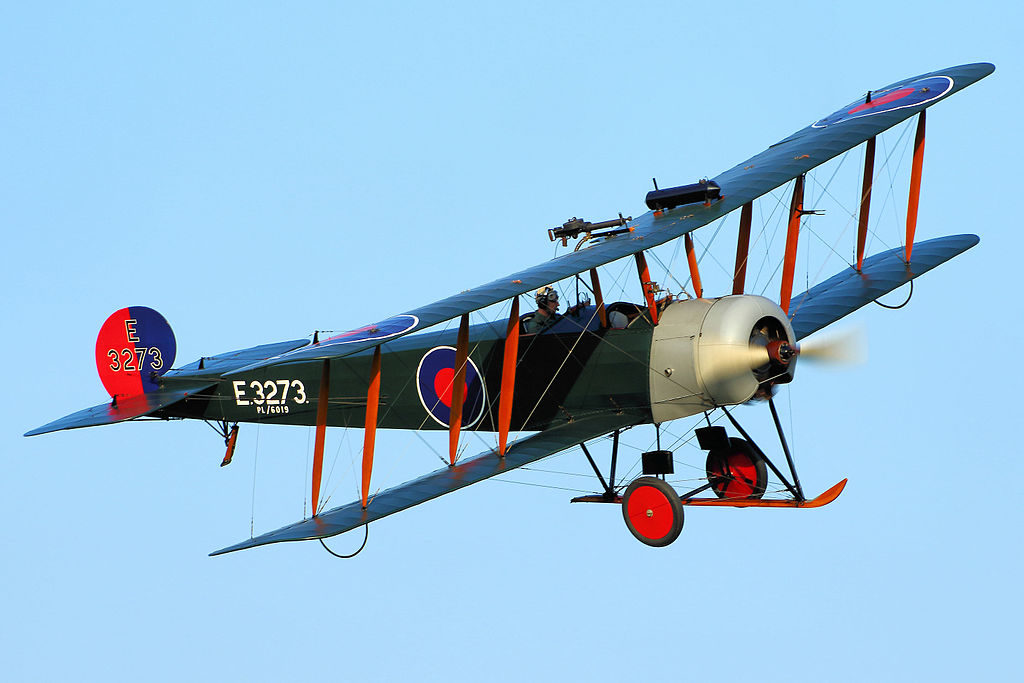
On 29 December, having completed a total of 5 hours solo flying, he was posted to 16 Reserve Squadron at Beaulieu for advanced instruction. His first two weeks at Beaulieu were notable in that he managed only two dual flights on Avro 504 trainers totalling 25 minutes. Whether this was due to the large number of trainee pilots being trained or inclement weather is unknown. By 16 January he had completed seven dual instruction flights on Avros and was sent solo. On 24 January he suffered two consecutive engine failures while on training flights, the first since the start of his training. Neither landing appears to have been bad, but on 2 February while flying Avro 7721 he made a bad
forced landing in a forest after an inlet valve broke while he was only at 500 feet. The Avro was extensively damaged but Lt Williams was unhurt and able to take another aircraft up three hours later.
By 22 February he was considered competent enough to progress to dual instruction on BE2C’s and he made 3 flights totalling 53 minutes with Lt Lawrence and Capt O.Westendarp.
For some time Lt Williams had been experiencing health problems, which were aggravated by the flying training, and on 27 February he was struck off strength at 16 Reserve Reserve Squadron and hospitalised. After surgery he remained in hospital until 12 April and was then cleared by a medical board and posted back to 16 Reserve Squadron to complete his training. This is another example of his extreme good fortune as, had he completed his training without the break, he would have qualified in time to be posted to France in March 1917, just in time to fly through ‘Bloody April’ as it came to be known in the RFC. Being hospitalised meant that he was able to miss the carnage.
Due no doubt to the severe casualties suffered by the RFC in that month, his training was accelerated and between 14 and 20 April he made 15 flights on BE2C and BE2E aircraft, practicing bomb dropping,photography,cross
country and panneau and ground strip reading.
This completed his training with 16 Reserve Squadron and, after making a 20 minute flight at Brooklands in a BE2C to practice artillery spotting, he was posted on 27 April 1917 to 7 Squadron at Matigny in France.
No.7 Squadron was a Corps squadron attached to the Third Wing RFC. They were equipped with BE2E’s and commanded by Major A.T.Whitelock. Williams was not given much time to familiarise himself with the squadron or it’s operational area. On 5 May he made his first practice and operational flights but his introduction was not to be a smooth one. He first made a practice flight in BE2E 2542 around the aerodrome and then set out with his observer, Lt Whigham, on an artillery shoot to Maissemy. However, after 15 minutes they were forced to return to the aerodrome with their engine failing. They were
re-assigned to BE2E A2801 but had to return to the aerodrome no less than three times with wireless set failure, before they successfully concluded the shoot on Maissemy.
Henry Williams made no further flights from Matigny as the squadron was moved to Proven, on 23 May 1917.
In early May 1917 the Allies had decided to launch a major offensive to drive the Germans back from the Belgian coast, to be carried out by the British armies in Flanders.
After a conference between Sir Douglas Haig and his army commanders, it was decided that the Second Army, under the command of General Sir Herbert Plumer, would have to capture the Messines Ridge prior to the main offensive. This was to deny the Germans observation over the countryside in which the preparations for the main offensive would be completed. At the same time the British Fourth Army front had been shortened after the French line had been extended, and it was decided that 7 Squadron be moved north to become part of the Second Wing RFC.
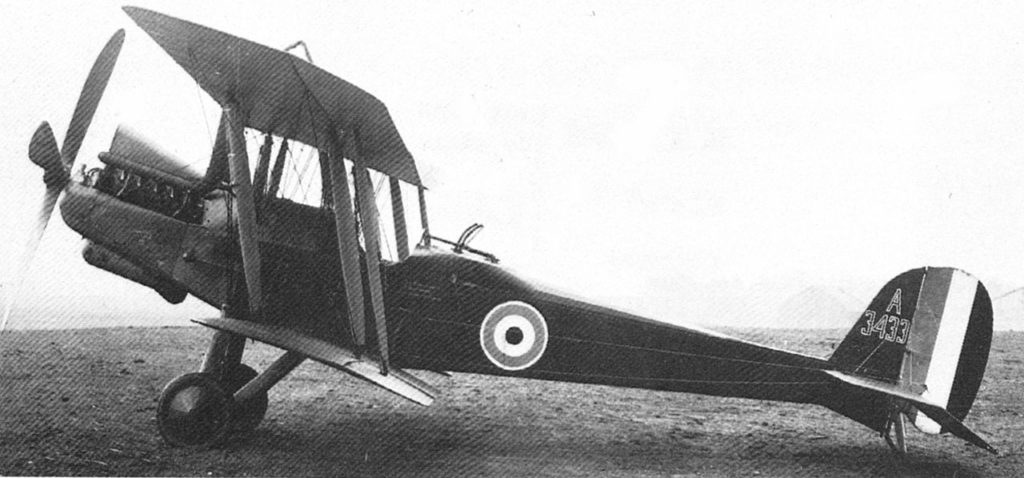
21 Squadron was attached to the Eighth Corps, which was on the northern flank of the Tenth Corps. Eighth Corps infantry were not directly involved in the planned assault but their artillery was well placed to deal with German batteries that could threaten the Tenth Corps during the assault.
The arrangement for 7 Squadron crews co-operating with 21 Squadron was to fly to Poperinghe daily and then fulfil their operational orders there and fly back to Proven when finished for the day.
On 27 May Williams and his observer, 2Lt A.E. Turner, were sent on a counter battery shoot over the Ypres Salient but the battery they were co-operating with was being shelled and were unable to fire themselves.
On 2 June Williams had his first accident on operational duty when he and 2Lt Turner, landing on rough ground at Poperinghe, wiped off the undercarriage and broke the propeller of BE2E A2940. For the next four days preceding the battle Williams and Turner were active daily on counter battery artillery shoots. The most successful of these was made on 6 June when Lt Williams successfully ranged a battery onto an ammunition dump near Zonnebeke and
destroyed it. His observer on this occasion was Lt Stanley Willmott.
On 7 June 1917 the Battle of Messines was begun. 21 Squadron and their attached flight of BE2E’s from 7 Squadron were required to maintain five aircraft over the battle front from dawn to watch for enemy battery fire and call up counter battery fire to neutralise these. Henry Williams’ contribution to the 75 hours of flying done by 21 Squadron on this day was a 2 hour 15 minute flight with Lt Whigham during which they had a big hole blown through a wing but made it safely back to Poperinghe.
13 June marked the first change in Henry Williams’ routine of artillery observation when he and 2Lt G.P.Simon did a 40 minute line reconnaissance of the Ypres Salient. The Battle of Messines officially ended on 14 June and Williams ended his part with another flash patrol in company with 2Lt Simon, during which they fired a drum of Lewis ammunition into the German trenches.
For the next week Lt Williams was engaged solely on flash patrols in search of active German batteries. Most were unsuccessful as the weather was generally bad with poor visibility and occasional thunderstorms. However, on 20 June, he and 2Lt Simon were able to put in two zone calls on German batteries and on 21 June his observer, Lt Stanley Willmott, fired three drums of ammunition into the German trenches.
With the ground activity slowing down Williams was paired with Lt Willmott and placed on artillery observation patrols again.
On 24 June, while conducting a successful shoot with an 8 inch howitzer battery, they were attacked by seven EA, but these sheered off when fired at by Willmott.
An interesting entry in Henry Williams’ logbook for this period is the one for 26 June. Flying BE2E A2940 on a counter battery shoot with Lt Willmott as his observer, they dropped bombs north of St Julien! How they managed to fly a BE2E with an observer, wireless, gun and bombs remains a mystery as most BE2 variants were almost impossible to get off with a full war load and one can only speculate as to why they did so on this occasion.
Later in the same day they made an artillery observation flight in the same aircraft. This was to be the last operational flight by Henry Williams on BE2E’s
as 7 Squadron began to re-equip with the RE8 and on 27 June he flew to St Omer in BE2E 5822 and returned to Proven with RE8 A4622, which was allocated to him.
His first operational flight in the RE8, and the last one he did in June, ended prematurely when his engine failed while over Ypres and he had to glide back to the aerodrome. The failure was caused by a broken rocker arm standard, a problem which was to re-occur on other flights.
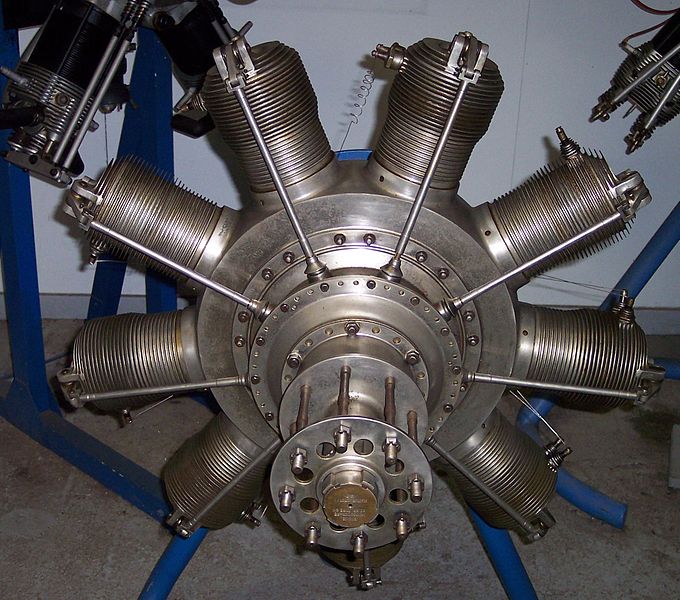
With the re-equipment of 7 Squadron with RE8’s, they took on a more offensive role and on most artillery observation flights undertaken by Lt Williams in July he also dropped bombs on various targets. On 16 July, while on an artillery observation patrol in cooperation with the 128th Siege Battery of 12 inch howitzers, A4622 suffered another engine failure and this time Henry Williams and his observer, 2Lt A.E. Turner, were unable to regain their aerodrome. Instead, they force landed in a field of oats where the RE8 turned over, smashing it’s propeller and throwing Turner out of the aircraft completely. Luckily, neither was hurt in the crash. The following day, while flying A4624
on a line reconnaissance, another rocker arm broke in the engine and he was forced to return to the aerodrome.
With the preparations for the forthcoming Third Battle of Ypres in full swing, 7 Squadron were heavily engaged in ranging artillery onto enemy concrete pillboxes and battery positions. In the fortnight preceding the battle the Allies fired 4,500,000 shells in an intensive bombardment that was intended to knock out all German resistance.
Consequently, from 19 July, Henry Williams was engaged almost daily on artillery observation patrols, sometimes doing more than one patrol per day. During all of these he also dropped bombs on opportunity targets, such as Kitchen Wood and St Julien.
On 26 July he was given a new observer, Sgt J.G. Morris, the only NCO observer in C Flight.
Theirs was to be a long and very successful partnership and it started that day with a very successful shoot in cooperation with the 128th Siege Battery on a German battery at position CX7. They ranged 5 direct hits onto the target, afterwards reporting the position as totally destroyed.
On 27 July, while he and Sgt Morris were ranging four batteries onto Poelcapelle, Henry Williams scored his first and only confirmed victory over an enemy aircraft in the war.
They were attacked by two Albatros scouts and, during a brief skirmish in which the front Vickers gun jammed, they succeeded in shooting one down, seeing it crash near Langemarck.
This was to be a good day in Henry Williams career as later that day he was
notified of his promotion to Captain. He was also to be awarded the Military Cross for this combat and other good work in 17 and 7 Squadrons. However, with the battle scheduled to start in four days the work was far from finished and they flew a further patrol that day and another four before the end of the month. Their busiest day in July was the 28th when Capt Williams and Sgt Morris made three artillery patrols totalling no less than seven hours 40 minutes flying time.
The Third Battle of Ypres was launched in the dull overcast of 31 July 1917. Henry Williams woke on this day to find himself promoted to the command of C Flight, and set out early in RE8 A4622 with 2Lt J. Bailey as observer on a flash patrol to the front.
However, the cloud cover was at 600 feet so they returned, it being unwise to attempt to fly through the barrage and ground fire at this height. Later in the day they made another attempt to do a flash patrol but found that the cloud cover had now lowered to 350 feet.
Williams was encouraged enough by what he saw to report that the attack was going well.
However this was not the case on the right hand side of the attack, where the troops quickly became tied down and did not take their set objectives. After this the weather deteriorated to such an extent that the squadron was unable to do much flying for the next two weeks, depriving the staff and the infantry of much valuable support and reconnaissance.
On 9 August, with Lt J. Simmance as observer, he set out on an artillery shoot and photographic reconnaissance of the frontline trenches. In a patrol that lasted almost three hours they were able to take a dozen good photographs but where unable to range any batteries successfully due to the poor visibility. At one point during the patrol they were attacked by three EA but after an indecisive combat these flew away and did not return.
Another example of the frustrations caused by the weather was the two flights made the next day in an attempt to range the 63rd Siege Battery onto a German battery near Poelcapelle. Williams flew a total of over three hours during which he and Sgt Morris were only able to range two direct hits onto the battery, all because of the poor ground visibility.
On 13 August Henry Williams went on leave to England and returned to the squadron on 30 August. Once again he was to have a less than successful return to operational flying.
On 1 September he suffered an engine failure immediately after take off on his first flight since returning, and he ran RE8 A4622 into a ditch when force landing and wrecked it,
luckily without injury to himself or his observer, Stanley Willmott. Willmott’s luck however, was to run out the next day when he was wounded during a combat with EA while on a patrol with another C Flight pilot, 2Lt L.G. Brazier. During the next eight days Capt Williams made a further six attempts at artillery patrols with Sgt Morris, but was only successful on one occasion, the rest being abandoned due to rain, low cloud and poor visibility. After this the weather improved considerably and 7 Squadron were able to
undertake patrols more frequently.
On 16th Williams and Sgt Morris had another brush with enemy aircraft. While ranging the 215th battery onto a target in the vicinity of Spriet Copse they were attacked by three Albatros scouts but drove these off.
On 20 September, thanks to the improvement in the weather, the infantry were able to launch another attack during which they made small gains over terrain already heavily shelled. Henry Williams and Sgt Morris made one artillery observation patrol in co-operation with the 158th Siege Battery on this day, and concluded it successfully despite experiencing engine trouble once again. The following day, with the battle intensifying, they flew two patrols of 3 hours each. On the first of these they were attacked by no fewer than 12 EA but still completed their mission safely. For the rest of September Williams and Morris were active almost daily, ranging both pre-arranged targets and anything that
they could see from the air which warranted special attention. For example, on 26th they ranged the 261st Siege Battery of 8 inch howitzers onto a pre-arranged target in the vicinity of Mallet Wood and after successfully completing this they placed a general fire call on a group of 200 German infantry near Westroosbeke.
Between 1 and 11 October the Allied infantry consolidated what gains they had made and on 12 October General Haig launched another series of attacks in a desperate last bid to break through the German line. Consequently, during the first 11 days of the month 7 Squadron were engaged on routine reconnaissance and artillery flights for the most part. This was as well for Capt Williams, as he suffered four separate instances of engine failure while attempting to carry out patrols. On the opening day of the renewed offensive Capt Williams and Sgt Morris spent over three hours patrolling the front during which they watched for German battery fire and ranged the 261st Siege again.
On 15 October Williams and Morris attempted to range the 261st Siege Battery onto a battery situated 1000 yards west of Westroosbeke. They had to cut short their first flight after 50 minutes when a flying wire in RE8 B5032 broke. After returning to Proven,they took replacement RE8 B6467 up and successfully completed the shoot. On 16 October, Major Whitelock handed command of 7 Squadron over to Major B.E.Sutton DSO,MC.
On 21 October the British infantry renewed their advance once again but, due to poor weather conditions, 7 Squadron were unable to do much flying in support of the attack.
On 22 October Williams attempted to range the 256th Battery but was unsuccessful, as the battery gun buffers broke and they were unable to commence firing. The weather continued to deteriorate, and on 26 October, when the next Allied attack was launched, there was heavy rain falling and clouds at 900 feet making co-operation almost impossible. But, on 27 October, Capt Williams and Sgt Morris’ luck changed dramatically.
They were up in RE8 A4419 on a flash patrol for three hours. During this patrol they spotted no fewer than three trains and put in neutralization fire calls on them. One train, probably loaded with munitions, blew up in spectacular fashion, destroying 15 carriages.
For this action they were both Mentioned in Despatches.
On 30 October the British infantry attacked again but 7 Squadron were again unable to fly in support, this time due to very strong winds. In fact, during the next week, Capt Williams and Sgt Morris made only one flight, on the 31st.
On 6 November, flying in low cloud on a flash patrol, Capt Williams witnessed the capture of Passchendaele. In just over three months of offensives which were fought in the squalid, muddy shellholes for the most part, the Allies had advanced barely five miles at a cost of 325,000 men.
Henry Williams had been in France for 6 months, all of the time spent flying in the Ypres Salient through the Battles of Messines and Third Ypres. He had
been promoted to Captain and flight commander of C Flight, 7 Squadron and been awarded the MC and received a Mention in Despatches.
With the offensive stalled at Passchendaele the work of 7 Squadron returned to a normal routine with fewer patrols required per day. For the remainder of the month Capt Williams flew a further 11 patrols.
His final active duty patrol of the war was flown on 29 November in company with Sgt Morris. Flying RE8 A4419 they ranged the 185th Siege Battery onto
an enemy battery 800 yards north east of Westroosbeke.
He had flown a total time in France and Belgium of 252 hours 40 minutes.
After returning to England, where he was given leave, he reported on 5 January 1918 to 28 Training Squadron at Castle Bromwich for duty as an instructor. He served here until 25 March, when he was transferred to the Staff at local Headquarters. Promoted to Major, he spent the following three months touring other training stations. He also got to fly his first fighter aircraft, the Sopwith Pup.
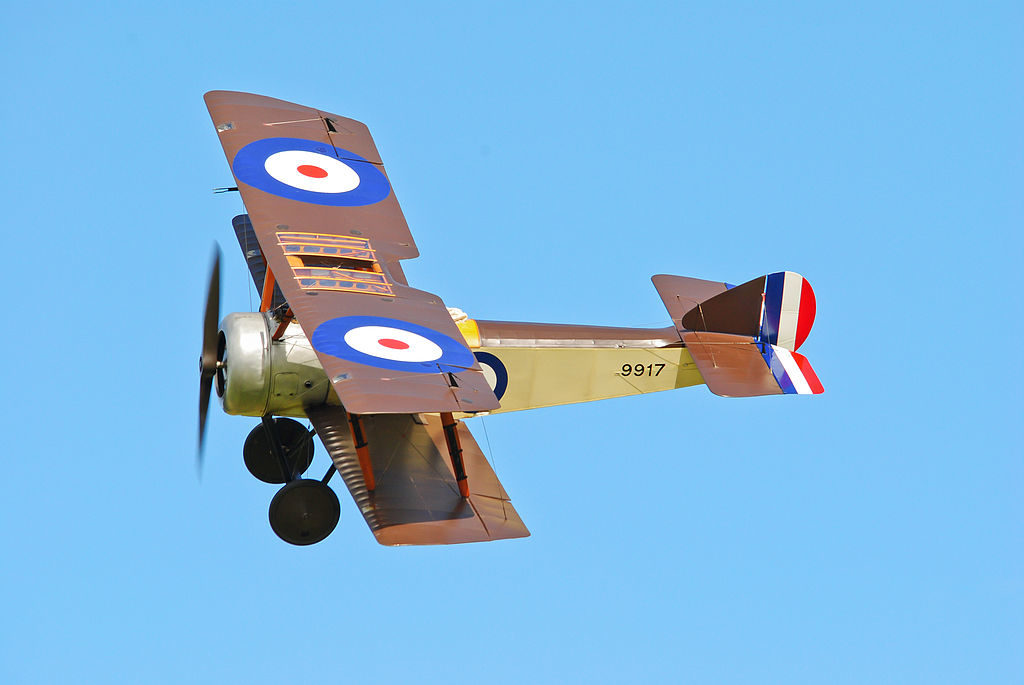
His final flight was a 15 minute instructional flight with Flight Cadet Dawe in a DH9 on 20 December 1918.
He had flown a total of 385 hours 40 minutes as a pilot and 100 hours as an observer.
ACKNOWLEDGEMENT
I would like to acknowledge the kind assistance of the staff at the Walsh Memorial Library,
Museum of Transport and Technology, Auckland, for making available to me the papers and photographs of the late Mr. H.D. Williams, which form the basis of this article.
REFERENCES
H.A.Jones, The War in the Air, Vol.4, p.109 – 181
H.A.Jones, The War in the Air, Vol.5, p.165 – 191,338
‘A Short History of 7 Squadron RFC’ in Cross and Cockade (USA), Vol.22 No.3, p.193-229